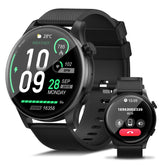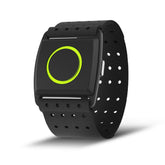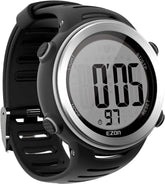Strength Training for Cyclists: Build Power with Heartbeat-Controlled Workouts
Elevate your cycling performance by merging science-backed strength training with heartbeat monitor precision. This guide reveals how to target cycling strength, build explosive leg power, and enhance core stability—all while using heart rate data to optimize intensity and streamline recovery training.
1. The Science Behind Heartbeat-Controlled Strength Training
A. Heart Rate Zones for Cyclists
- Zone 2 (60–70% MHR): Endurance-focused training, ideal for low-intensity strength circuits to build muscle endurance.
- Zone 4 (80–90% MHR): Power-building zone for explosive movements (e.g., plyometrics), where heart rate spikes signal optimal effort.
- Monitor Insight: Use a heartbeat monitor to ensure strength sessions stay within target zones—overtraining in Zone 5 can lead to fatigue, while undertraining in Zone 1 wastes effort.
B. Strength Training’s Impact on Cycling
- Leg Power: 15–20% increase in sprint capacity after 8 weeks of targeted strength training (Journal of Sports Science).
- Core Stability: Reduces energy waste by 12% during long rides, as tracked by heart rate variability (HRV) improvements.
2. Targeted Strength Drills for Cyclists
A. Leg Power-Building Workouts
1. Squat Variations
- Weighted Squats: 4x8 reps at 70% 1RM, maintaining heart rate at 75–80% MHR.
- Pistol Squats: Single-leg balance drills to improve pedal stroke efficiency, with heart rate spikes to 85% MHR during sets.
2. Plyometric Jumps
- Box Jumps: 3x10 reps, aiming for heart rate to reach 90% MHR during explosive phases—use a heartbeat monitor to time 90-second rest intervals between sets.
B. Core Stability Routines
- Plank with Hip Dips: 3x45-second holds, keeping heart rate below 70% MHR to focus on form.
- Russian Twists with Resistance Band: 3x15 reps/side, monitoring heart rate to ensure core work doesn’t interfere with leg recovery.
3. Heart Rate-Driven Recovery Strategies
A. Post-Workout Recovery Protocol
-
Active Recovery:
- 10-min easy spin at Zone 1 (50–60% MHR) post-strength session to flush lactic acid.
-
HRV Monitoring:
- Use heartbeat monitor HRV data—if HRV drops >10% from baseline, swap heavy lifting for bodyweight exercises.
B. Nutrition Timing
-
Post-Strength Meal:
- 40g protein + 60g carbs within 30 minutes of finishing, timed to coincide with heart rate dropping to 65% MHR (signaling recovery onset).
4. 4-Week Heartbeat-Controlled Training Plan
Week 1–2: Base Building
| Day | Focus | Heart Rate Target | Workout Example |
|---|---|---|---|
| Monday | Leg Strength | 70–75% MHR | Squats (4x8) + lunges (3x10) |
| Wednesday | Core & Endurance | 60–65% MHR | Planks (3x60s) + cycling-specific core drills |
| Friday | Active Recovery | <60% MHR | Yoga + easy spin (20 mins) |
Week 3–4: Intensity & Power
-
Plyometric Focus:
- 2x/week box jumps (3x12) at 85–90% MHR, paired with 1-min rest (monitored via heartbeat monitor).
5. Common Mistakes to Avoid
-
Neglecting Heart Rate Recovery:
- Solution: Wait until heart rate drops to 65% MHR before starting the next set to avoid overtraining.
-
Overtraining Legs:
- Solution: Limit heavy leg days to 2x/week, using HRV to gauge muscle readiness.
-
Ignoring Core as a Power Source:
- Solution: Allocate 20% of strength time to core work, keeping heart rate controlled for precision.
6. FAQs: Your Cycling Strength Questions Answered
Q: How does heart rate training differ from traditional strength training?
- Heart rate control ensures you train at optimal intensity for your fitness level, preventing both undertraining and overexertion. Traditional methods often rely on “feel,” which can be inconsistent.
Q: Can I do strength training on cycling days?
- Yes, but schedule strength sessions 4–6 hours after cycling, or in the morning if cycling in the evening. Use a heartbeat monitor to ensure cumulative training load doesn’t exceed HRV capacity.
Q: How long until I see cycling performance improvements?
- Most cyclists notice increased power and stamina within 4–6 weeks of consistent, heart rate-controlled strength training.
Ride Stronger, Train Smarter with Heart Rate Precision
By integrating heartbeat monitor data into your strength routine, you’ll transform guesswork into science—building leg power, refining core stability, and optimizing recovery training. Remember, cycling performance isn’t just built on the bike—it’s forged in the gym with precise, heart rate-guided strength work.
Gear up with the right tools, trust the data, and let every strength session bring you closer to your next cycling breakthrough.
EZON Watch: Professional Sports Technology for Cyclists
https://ezonwatch.com
https://ezonwatch.com









